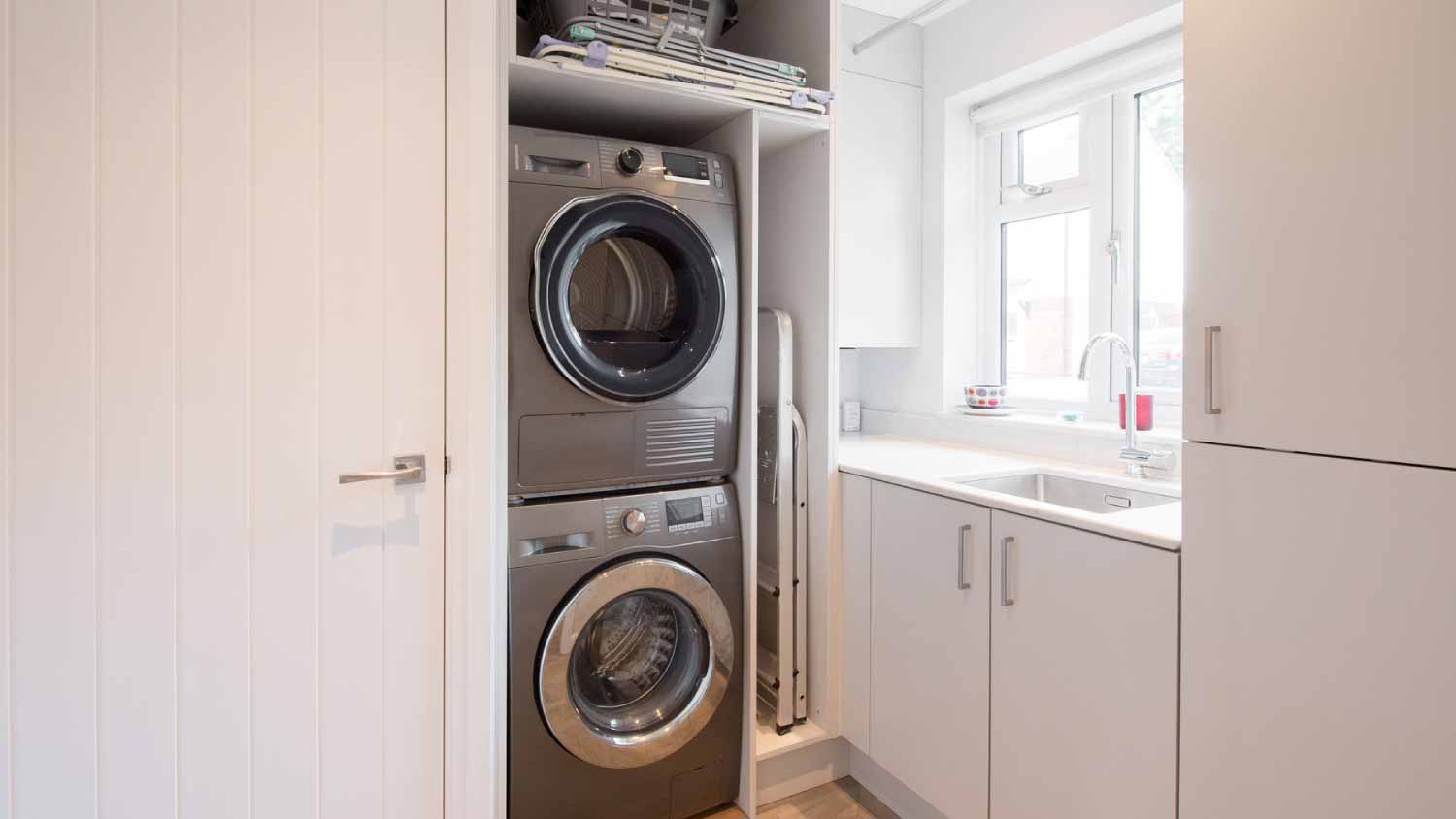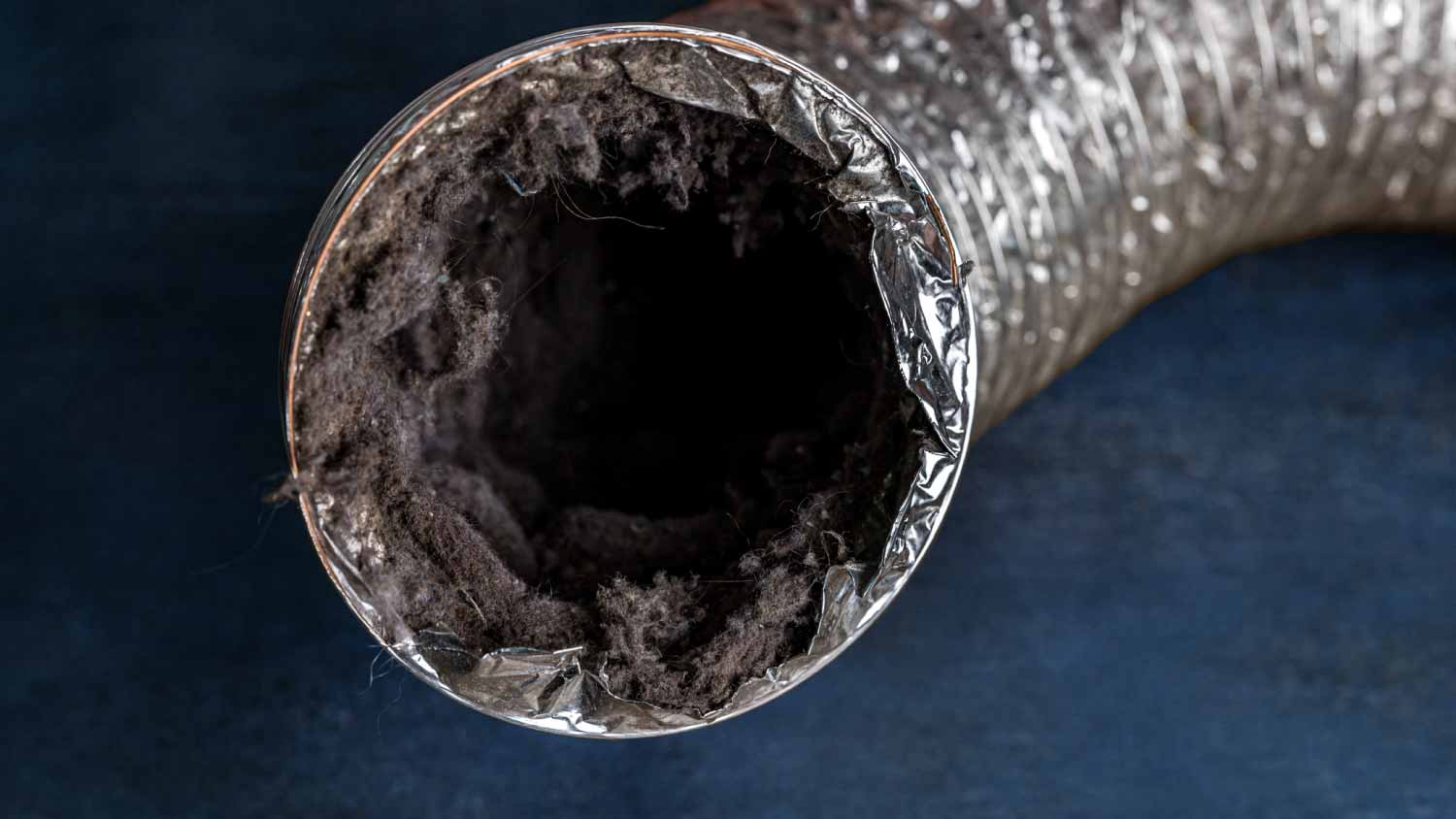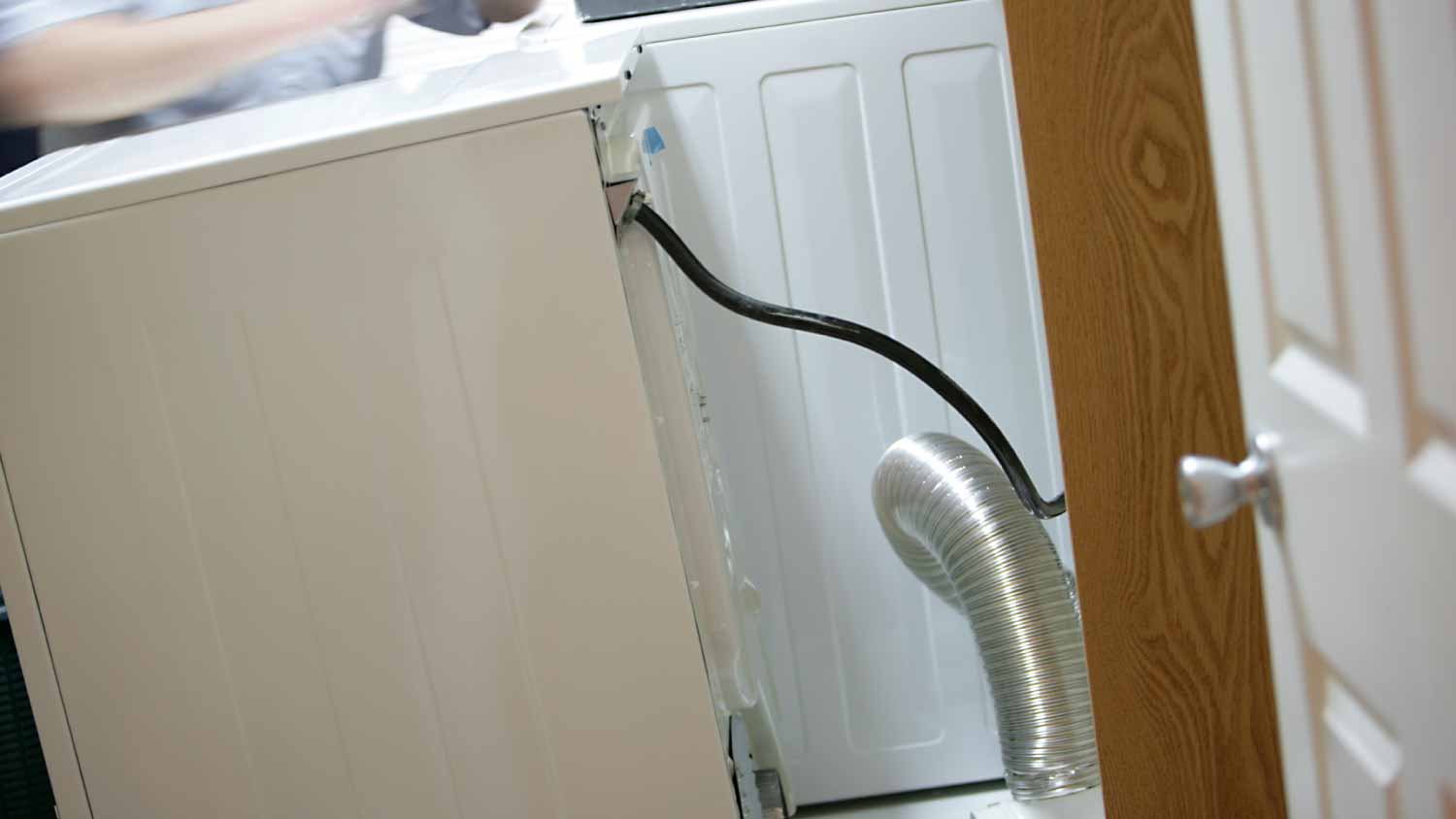
Discover the average dishwasher installation cost, key price factors, and tips to save on your project. Get transparent, expert-backed estimates.
Don't let condensation dampen your clothes (or your mood)


Condensation can form in your dryer, making it feel wet when cold air is introduced into the machine.
A clogged lint trap and a damaged door gasket are two common causes of condensation buildup.
Fixing a wet dryer situation is essential to minimize potential mold growth and fire hazards.
Why is my dryer wet inside? Regardless of the type of dryer you have, its objective is to generate warm air, circulate it while taking moisture from your laundry, and vent it from the machine and your home. Because warm air and water are involved, any introduction of colder air can create condensation in the system. Here are seven reasons why it happens and how to fix each one.
The most common cause of water appearing inside a dryer in the form of condensation is a clogged lint trap. A clean lint trap allows hot, wet air to pass through to the machine's exhaust while trapping the lint particles that clothes shed in the tumbling process. A clogged lint trap slows airflow and forces the machine to pull in outside air through whatever means possible. The cooler air that enters causes water droplets to condense within the warm machine.
As the most common dryer condensation problem, it's also the easiest to fix. Simply clean out the lint trap after every load of laundry. Operating the dryer with a dirty lint trap not only can create a wet dryer condition but can also lead to an excessively dirty exhaust hose that can be a fire hazard.
Your clothes dryer relies on being a sealed system to dry your clothes efficiently. The machine moves a lot of air and can act as a low-pressure system, which can suck in cooler air through any means possible. A damaged door gasket can be the perfect entrance for cooler air to get in, mix with the warm air, and create condensation.
Inspect your dryer's door seal for cracks, wrinkles, or missing pieces. If your door gasket is damaged and your DIY skills are up to the task, you can order a new seal from the manufacturer or find one in an appliance or hardware store. Many homeowners opt to hire a dryer repair professional to perform the fix.

If your clothes dryer is in an unheated area of your home, such as an unfinished basement or garage, cold air can find its way inside the machine as it operates. While the cause of condensation is usually a combination of being in a cool area and an airflow restriction, cold weather alone can be enough to cause the problem.
If possible, move the dryer into a heated space within the home. If that’s not practical, insulate the walls or area surrounding the machine. You can also simply avoid using the dryer on particularly cold days.
In cold climates, especially if your dryer vent hose travels through unheated spaces like the attic or garage, dryer vent insulation is crucial for preventing water condensation buildup within the machine. Under- or un-insulated vent hoses in these conditions can also cause condensation within the vent hose itself, attracting loose lint that can build up to create a fire hazard.
If you live in a cool climate, building code requires dryer vent insulation when the machine is in an unfinished basement or other unheated space. Installing dryer vent insulation can be a good DIY project, or you can call in a professional to ensure proper dryer vent installation.

Lint buildup in your dryer vent hose can also cause condensation to occur in your dryer because of the restricted airflow through the system. In fact, if nothing else is immediately apparent as a cause for condensation, there's a good chance that this is your problem. It’s essential to deal with this issue promptly, because a dirty vent hose is also a fire hazard.
Part of maintaining your dryer is regularly cleaning out your dryer vent hose and its components. If your dryer is getting wet inside and the cause isn't clear, try cleaning out the vent system or hire a professional to do it. Professional dryer vent cleaning costs between $103 and $184 on average and is necessary at regular intervals.
While your dryer's exhaust hose and its components are relatively simple in design, if any parts suffer damage, it can restrict airflow and create condensation in the machine. Bent or crushed vent hoses or missing or malfunctioning exhaust flaps at the air outlet are common and require urgent attention to avoid causing other problems.
Visually inspect your dryer's vent hose, looking for areas of crushing, holes, or other damage. Also, if possible, check that the exhaust vent flap is in place and moves freely by hand. If trouble exists with any venting components, repairing them or installing a new vent system is essential. Installing or replacing your dryer vent costs between $140 and $600 on average.

Your dryer can move a lot of air. However, it can't move it over great distances. Having a dryer vent that's too long can slow the flow of air enough that it begins to cool and can invite condensation problems.
The maximum length of a dryer vent can't be more than 35 feet from the machine to its exterior venting point. However, many dryers aren't powerful enough on their own to manage that kind of distance. If your dryer vent is longer than 15 feet and you're seeing condensation in your machine, you can install a dryer vent booster fan into the system. This is a possible DIY job. However, most hire a professional for the task.
Many wet dryer situations are fixable through simple DIY tasks, such as cleaning out the lint trap or the exhaust vent. However, most homeowners choose to have a professional inspection from time to time and to have a nearby dryer repair professional handle any repair work.
DIY work around your dryer is mostly acceptable, except in cases where improper installation can create a fire hazard or severely impact the machine's efficiency. Installing a new dryer and its venting system is best left to the pros, while cleaning the lint trap and visually inspecting the machine on occasion are good DIY tasks.
From average costs to expert advice, get all the answers you need to get your job done.

Discover the average dishwasher installation cost, key price factors, and tips to save on your project. Get transparent, expert-backed estimates.

Get expert insights on dishwasher repair cost, including average prices, key cost factors, and tips to save money on repairs.

Get a clear estimate for stove repair costs. Learn what impacts pricing, compare repair vs. replacement, and find tips to save on your next stove repair.

Is your washing machine not draining? This is often an easy problem to fix. Keep reading to learn how to drain a washing machine.

Your gas stove may not light for a number of reasons, including problems with the safety valve or igniter. Learn how to troubleshoot why your gas stove is not lighting.

Let precision in the kitchen protect you from water contamination. Follow these simple steps for installing a dishwasher air gap.